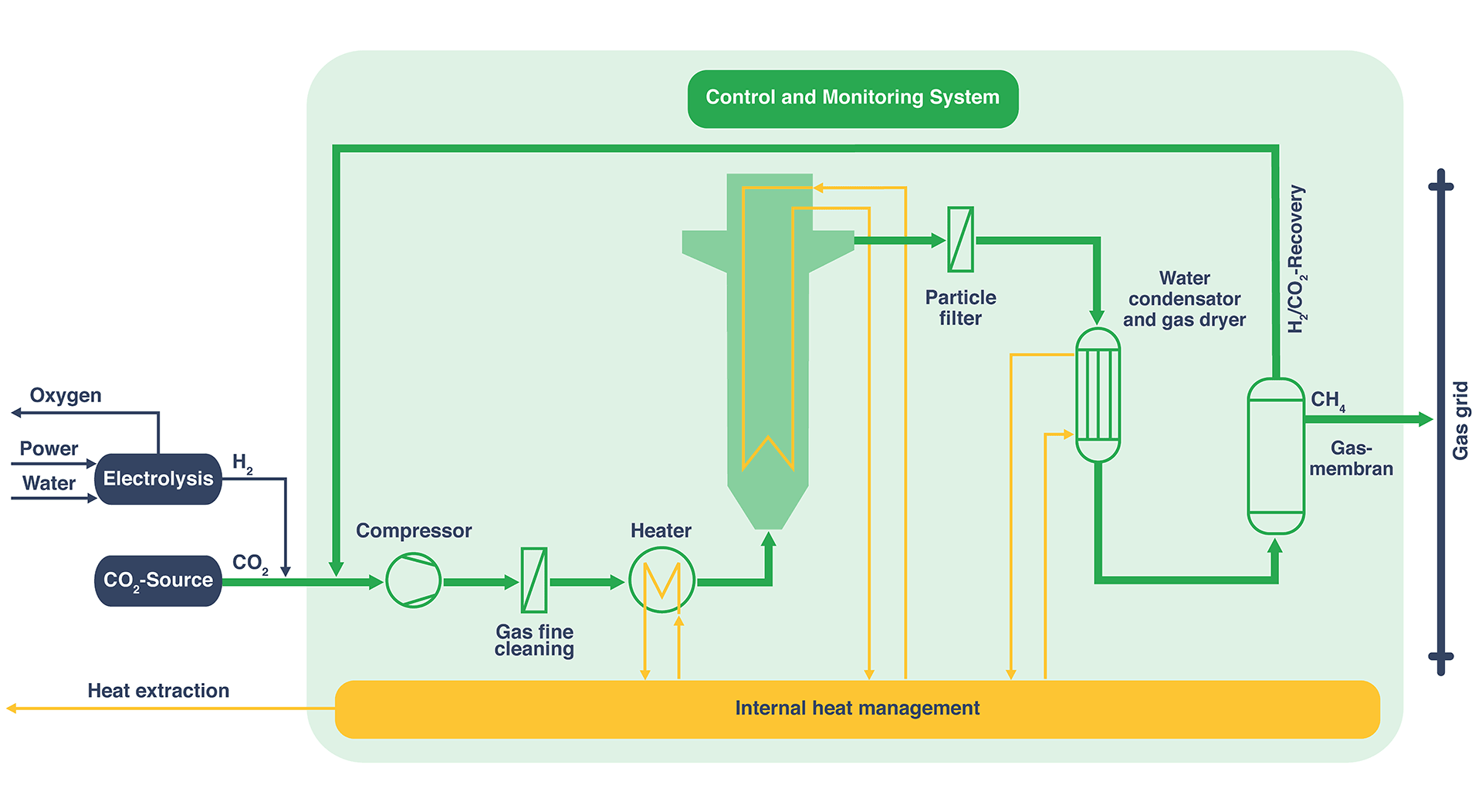It is possible to reduce fossilCO2 emissions byupcycling CO2 using the innovative “Swiss SynFuels technology”. Back in 1902, the two French chemists Paul Sabatier and Jean-Baptiste Senderens discovered the reaction ofCO2 and hydrogen (H2) to form methane (CH4) and water (H2O).
The reaction equation of the Sabatier process is therefore as follows:
4 H2 + CO2 ↔ CH4 + 2 H2O
With the CoMeth methanation module, AlphaSYNT offers a turnkey production plant for the production of renewable energy sources from biogenicCO2 and renewable electricity.
Since this discovery, many different processes have been developed to make this reaction as efficient as possible. The renowned Swiss research institute PSI (Paul Scherrer Institute) has developed a fluidized bed reactor for its methanation process that contains fine-grained nickel particles as catalysts for this reaction. As the biogas (CO2 and CH4) and hydrogen flow in, the particles are whirled up and put into a fluidized state by the upward flow. This achieves a continuous reaction over the length of the reactor and converts theCO2 contained in the biogas into additional methane.
The CoMeth module consists of the following devices:
- Fluidized bed catalytic methanation reactor
- Gas membrane for the recovery of unreacted H2 andCO2
- Gas compressor
- Heat management system for heat extraction
For quick and easy installation, the interfaces on the CoMeth modules have been reduced to a minimum.
CoMeth module – process schematics

CoMeth module – system layout

AlphaSYNT offers the CoMeth modules for converting CO2 into biomethane in the following performance classes:
| Power class | Output in kWSNG |
Production capacity in Nm3/hSNG |
Annual capacity in MWh |
CO2 upcycling in tCO2/a |
|---|---|---|---|---|
| 50 | 500 | 50 | 4’250 | 833 |
| 100 | 1’000 | 100 | 8’500 | 1’667 |
| 300 | 3’000 | 300 | 25’500 | 5’000 |
| 500 | 5’000 | 500 | 42’500 | 8’333 |
| 1’000 | 10’000 | 1’000 | 85’000 | 16’667 |